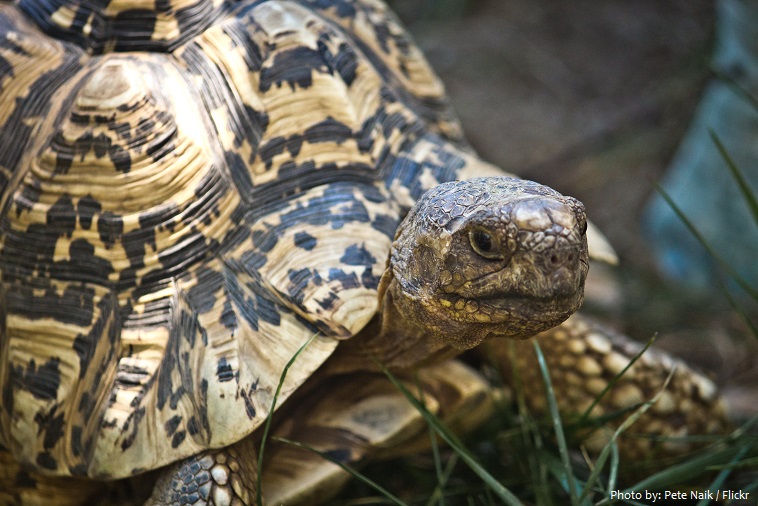
Tortoises are reptile species of the family Testudinidae of the order Testudines (from the Latin name for tortoise).
They are particularly distinguished from other turtles by being exclusively land-dwelling, while many (though not all) other turtle species are at least partly aquatic.
Tortoises are found from southern North America to southern South America, around the Mediterranean basin, across Eurasia to Southeast Asia, in sub-Saharan Africa, Madagascar, and some Pacific islands. They are absent from Australasia.
They live in diverse habitats, including deserts, arid grasslands, and scrub to wet evergreen forests, and from sea level to mountains. Most species, however, occupy semiarid habitats.
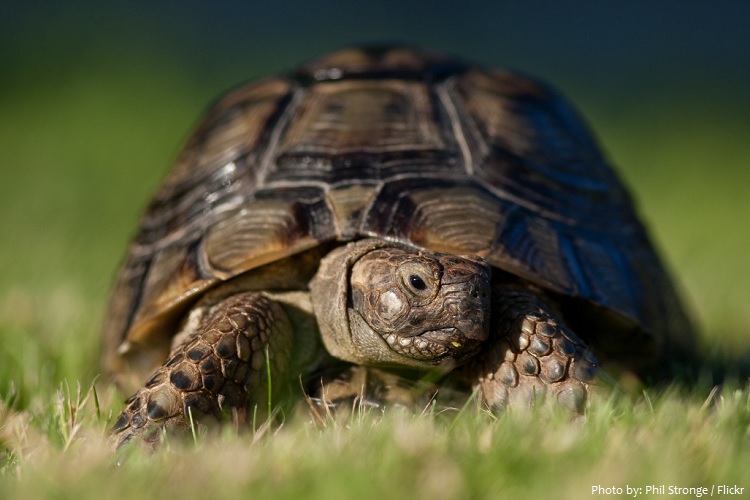
Unlike most sea turtles, which take to land only when they are laying eggs, tortoises don’t have much to do with water other than drinking it and occasionally bathing in it.
Like other turtles, tortoises have a shell to protect from predation and other threats. The shell in tortoises is generally hard, and like other members of the suborder Cryptodira, they retract their necks and heads directly backwards into the shell to protect them.
Tortoises can vary in size with some species, such as the Galapagos giant tortoise, growing to more than 1.2 m (4 feet) in length, whereas others like the Speckled cape tortoise have shells that measure only 6–8 cm (2.4-3.1 inches) long.
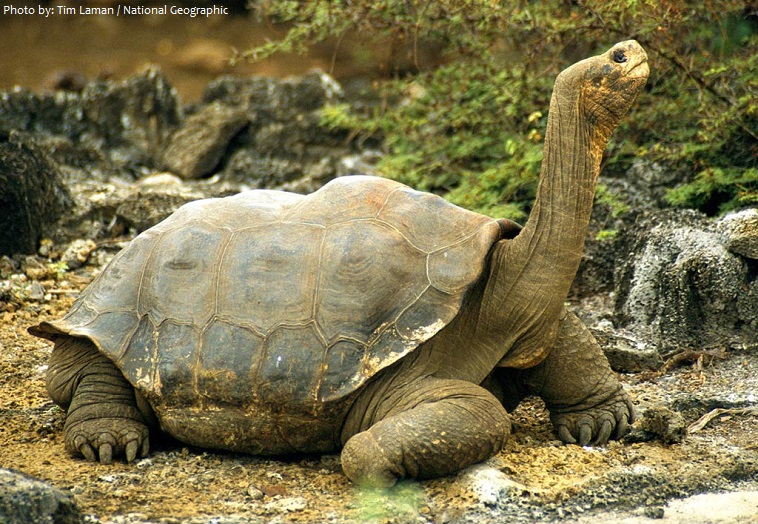
Several lineages of tortoises have independently evolved very large body sizes in excess of 100 kg (220 pounds), including the Galapagos giant tortoise and the Aldabra giant tortoise.
Tortoises do not have webbed feet – their feet are round and stumpy for walking on land. Tortoises that live in hot, dry habitats use their strong forelimbs to dig burrows. Then, when it’s too hot in the sun, they slip underground.
Tortoises do not have ears like ours, but they can feel vibrations and changes in water pressure that tell them where food, or a predator, might be. They do have a good sense of smell, which helps them find food. The skin of a tortoise, may look leathery and tough, but it is actually very sensitive. In fact, the Galápagos tortoises seem to enjoy having their necks rubbed.
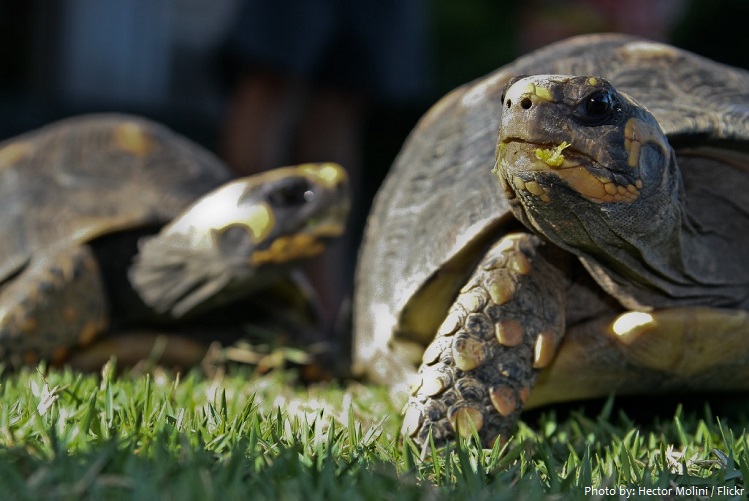
Tortoises, such as the Galápagos tortoise, can see in color and are especially attracted to red food items.
Tortoises don’t have teeth. Instead, their mouths have a hard, sharpened edge that they use to bite with, kind of like a bird’s beak.
Most land-based tortoises are herbivores, feeding on grasses, weeds, leafy greens, flowers, and some fruits, although some omnivorous species are in this family. Pet tortoises typically require diets based on wild grasses, weeds, leafy greens and certain flowers.
Tortoise are placid and very slow moving, with an average walking speed of 0.2–0.5 km/h (0.1-0.3 mph).
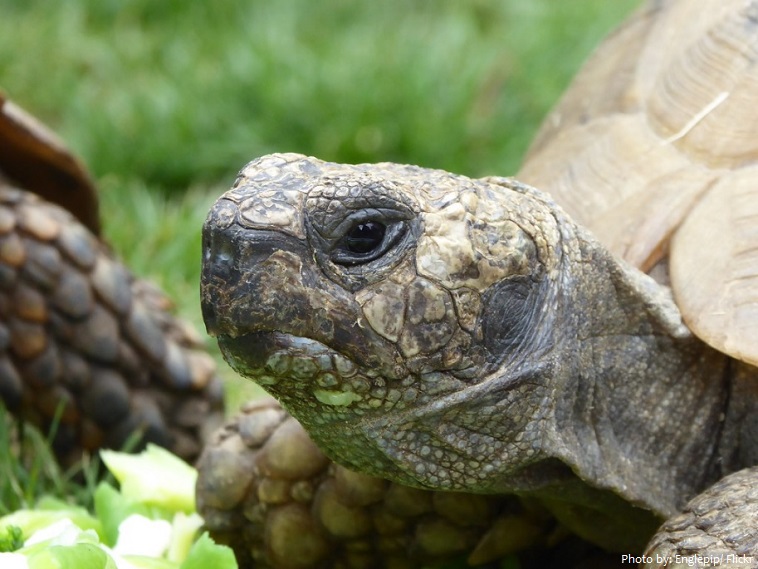
Tortoises are the longest-living land animals in the world, although the longest-living species of tortoise is a matter of debate. Galápagos tortoises are noted to live over 150 years, but an Aldabra giant tortoise named Adwaita may have lived an estimated 255 years. In general, most tortoise species can live 80–150 years.
Most species of tortoises lay small clutch sizes, seldom exceeding 20 eggs, and many species have clutch sizes of only 1–2 eggs. Incubation is characteristically long in most species, the average incubation period are between 100 and 160 days. Upon completion of the incubation period, a fully formed hatchling uses an egg tooth to break out of its shell. It digs to the surface of the nest and begins a life of survival on its own.
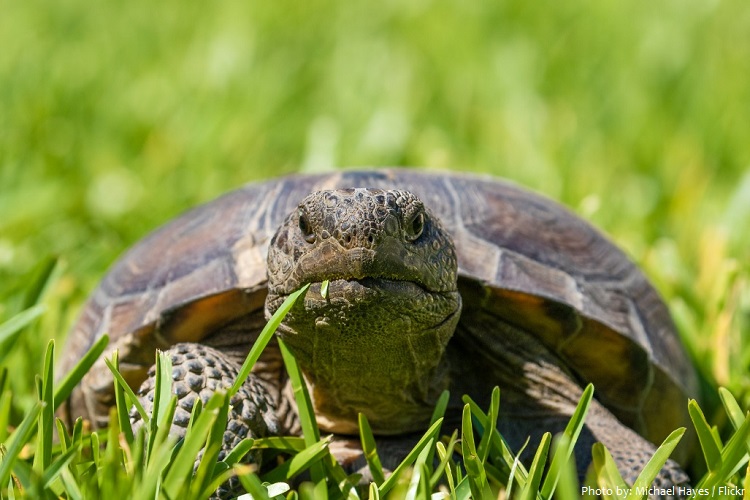
Pet tortoises are popular pets for many people since they are quiet, cute (especially as hatchlings), and don’t shed any fur. But tortoises can live a very long time (anywhere from 50 to 100 years). If you take one as a pet, be prepared to provide a lifetime of care and consider that your pet might even outlive you if you choose to keep one as a pet.
In Hinduism, Kurma was the second Avatar of Vishnu. Like the Matsya Avatara, Kurma also belongs to the Satya Yuga. Vishnu took the form of a half-man, half-tortoise, the lower half being a tortoise. He is normally shown as having four arms. He sat on the bottom of the ocean after the Great Flood. A mountain was placed on his back by the other gods so they could churn the sea and find the ancient treasures of the Vedic peoples.
Tortoise shells were used by ancient Chinese as oracle bones to make predictions.
The tortoise is a symbol of the Ancient Greek god, Hermes.